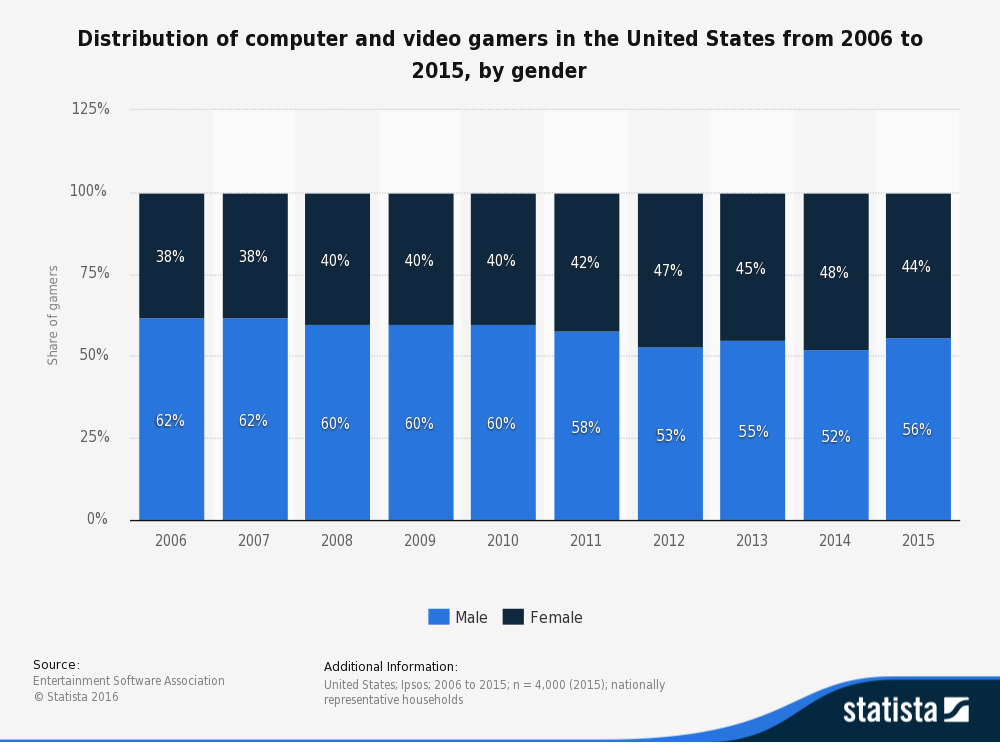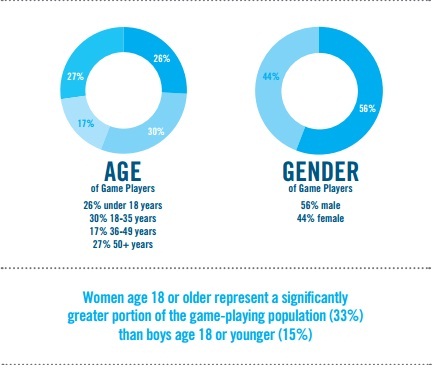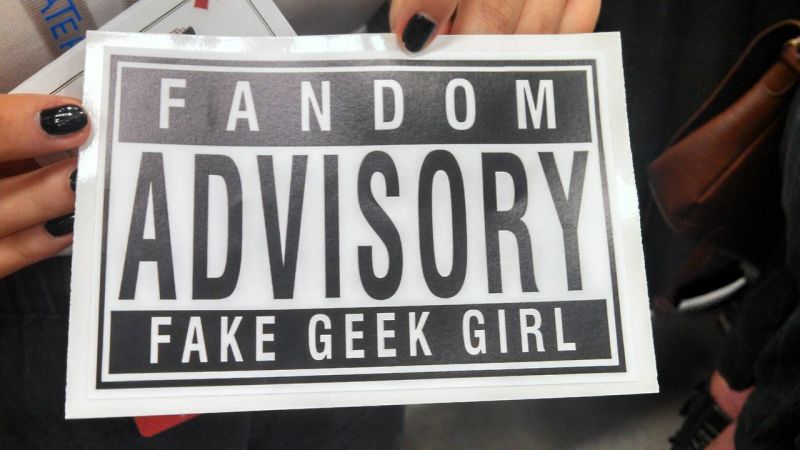By ANTHONY ZURITA
“I was participating in a small fighting game tournament. There were only three people I needed to beat and every time I won I had to report to another male student who was in charge of the tournament.” said Ramapo College Student Nicole D’Andria shares an experience during a videogame tournament.
“Every time I came up, he always seemed surprised that I won. You would think after the third time he would understand I was skilled and not be surprised, but he was.” D’Andria added.
The underestimation of female gamers has been a problem for years as women are fighting to receive the same respect as male gamers.
With the video game industry growing every year, the number of women in the gaming industry, whether a developer or player, is growing as well.
However, female gamers are receiving backlash from small parts of the male-dominated gaming community due to the assumption that they are gaming for attention or do not know what they are talking about. The problem is not only the women playing the games, but the general representation of female characters in the game.
Although gaming isn’t new, the higher percentages of females are. In 2015, 44 percent of gamers in the U.S. were female, according to statista.com. That’s nearly half although not as high as 2012, as it was 47 percent, the highest it has been in the past 9 years.

The high percentages over the years is a sign that the demographic of women in gaming has been present, and is here to stay.
The Entertainment Software Association released their 2015 report stating that although males as a whole are the majority of gamers, women aged 18 and over significantly outnumber the percent of males aged 18 and younger with 33 percent and 15 percent respectively.
The statistics can be surprising, as females aren’t thought of as the face of the gaming industry, as video gaming in society has traditionally been an activity that men do from the time that they are young.

Dana Baquiran, a female gamer at Ramapo College, who enjoys turn-based games, thinks that there are a lot of female gamers, but the average person wouldn’t think so.
“I think there is a high percentage of female gamers but I feel like it’s not represented well enough because all you see on gaming vlogs etcetera are male,” Baquiran said.
Fake Geek Girl
It has been a common stereotype that a girl that likes to play video games is looking for attention from her male counterparts. Due to this stereotype, women sometimes do not get the respect they deserve when playing games or when at events made for gamers.
RTX is an annual event held by gaming community company Rooster Teeth, and at this event, thousands of gamers come together to see panels of famous gamers and other activities.
Harris O’Malley, an internet personality that goes by the name of Doctor NerdLove, created an advisory sticker that said, “Fandom Advisory: Fake Geek Girl” on it, he shared in an interview with Kotaku.com
However, the stickers were not created in an attack against women gamers, but the contrary. O’Malley was fighting the very issue of sexism in gaming by making the stickers as a satirical joke on the issue. The problem was that someone at the event was slapping the stickers onto the rear ends of women at the event.
The Kotaku article explains explains, “The issue began when at least one publicly-unidentified person started to use these stickers in a way that betrayed their original meaning. Maybe they didn’t know they were meant to be satirical. Maybe they did, and decided to re-purpose them anyway by approaching unsuspecting women and slapping the stickers on their butts.”
Staff members of RTX approached O’Malley, as he recounted to Kotaku.com “They told me that somebody was taking them and slapping them onto women’s asses and the backs of their costumes. They asked if I could refrain from handing out any more until they got the matter cleared up.”

Shortly after, RTX staff released this statement, “We alerted our team of volunteers and convention center security immediately and dealt with the incident as quickly as possible. We do not tolerate any type of harassment and removed a couple of people who were making the event uncomfortable for other attendees over the course of the weekend.”
After clarification, the “couple of other people” were other unrelated incidents, so there were several cases of some sort of harassment at this event which is made to bring gamers together.
After the situation was over, O’Malley pondered what he should do with the stickers, “The story with the stickers is that they’re satire, pure and simple. I don’t believe in ‘fake’ geek girls and I like the idea of mocking people who buy into the idea with their own words, so I mocked up a design patterned after the “explicit lyrics” stickers for CDs,”O’Malley explained to Kotaku.com.
“My idea was that since the Explicit Lyrics tags were essentially a joke in terms of effectiveness and a hyperbolic reaction to a non-problem, the Fandom Advisory design would carry the same implications – that it was a meaningless label for a nonexistent problem,” O’Malley concluded in his interview with Kotaku.
However on his blog, O’Malley had a less politically correct response to the incident, “This [expletive] is NOT [expletive] ACCEPTABLE,” he wrote. “Cons are supposed to be safe spaces for everybody; [expletive] like this drives women out of fandom.”
Although this situation shows that there is indeed a problem with harassment and sexism in the gaming community, it also shows that there are some men, such as O’Malley, who vehemently oppose that very attitude.
Character Representation
The issues not are not only in the physical world, but seep into the digital walls of the games themselves. Much like the issues in film, there is a fight to have women portray dynamic protagonist roles in video game story lines. There have been women in videogames since their creation, but mainly as a barely-clothed side character with no real part in the story unless she is the famed “damsel in distress.”
The design of the female characters are often women with incredibly slim waists with large breasts and a large real with a beautiful face. Very similar to the controversy with Barbie dolls being seen as portraying only one body type, many video games are sending the same message.
Katie Ching, a Ramapo College student, says such videogame characters objectify women. This has been another issue surrounding female representation in videogames. “The women are hypersexualized and always the laugh of sexual jokes and innuendos while not really adding any real value to the storyline,” Ching said.
Daniel Santos, a Ramapo student who is a gamer, and who like O’Malley, has taken a stance against sexism in gaming. Santos finds these revealing outfits unrealistic and ridiculous.
“Why does the high level female armor in this game have such high defense points, but is completely revealing? Why is Quiet from Metal Gear Solid 5 running around the battlefield in nothing but her bra while I’m wearing heavy battle armor? ” Santos said. “Why is Sonya Blade in Mortal Kombat wearing an impractically revealing bullet proof vest? Unless the gaming industry can justify any of these things to be practical, they shouldn’t be in our games.”

Santos exposes a point that should be considered by all major game developers. The outfits, despite being revealing, are not practical and incredibly unrealistic. The female characters in these games are in the middle of warfare, or other kinds of combat. It doesn’t make much sense for a woman to be parading around half naked in the middle of a warzone while her male counterparts are in head-to-toe body armor.
Game developers have been dedicated to making the games as realistic as possible ever since consoles such as the Xbox 360 and PlayStation 3 were able to produce realistic images. The consoles have since evolved and so have the graphics and realism of the video games themselves, but no matter how realistic the graphics get the same problem remains. If the developers are trying their hardest to make everything look real, they should make sure the situations are realistic as well in terms of the dress of the characters.
When asked what could be done to stop sexism in gaming, Santos suggested having more powerful female protagonists.
“Games like Rise of the Tomb Raider, Metroid Prime, and Transistor help by creating strong female protagonists who are capable of doing anything a male protagonist can do,” Santos said. “These games create gaming figures that females that look up to and make female players feel like they actually have a selection of games where a female isn’t in distress.”
Many are fighting for equal representation but there is still a long way to go as the stigma surrounding female gamers is alive and well, “He seemed to be underestimating me because I was a female gamer. This made me feel slightly undervalued as a gamer and it felt unfair” D’Andria concluded.
[SOUNDSLIDES: Learn more about the Zoe Quinn scandal.]
Leave a Reply
You must be logged in to post a comment.